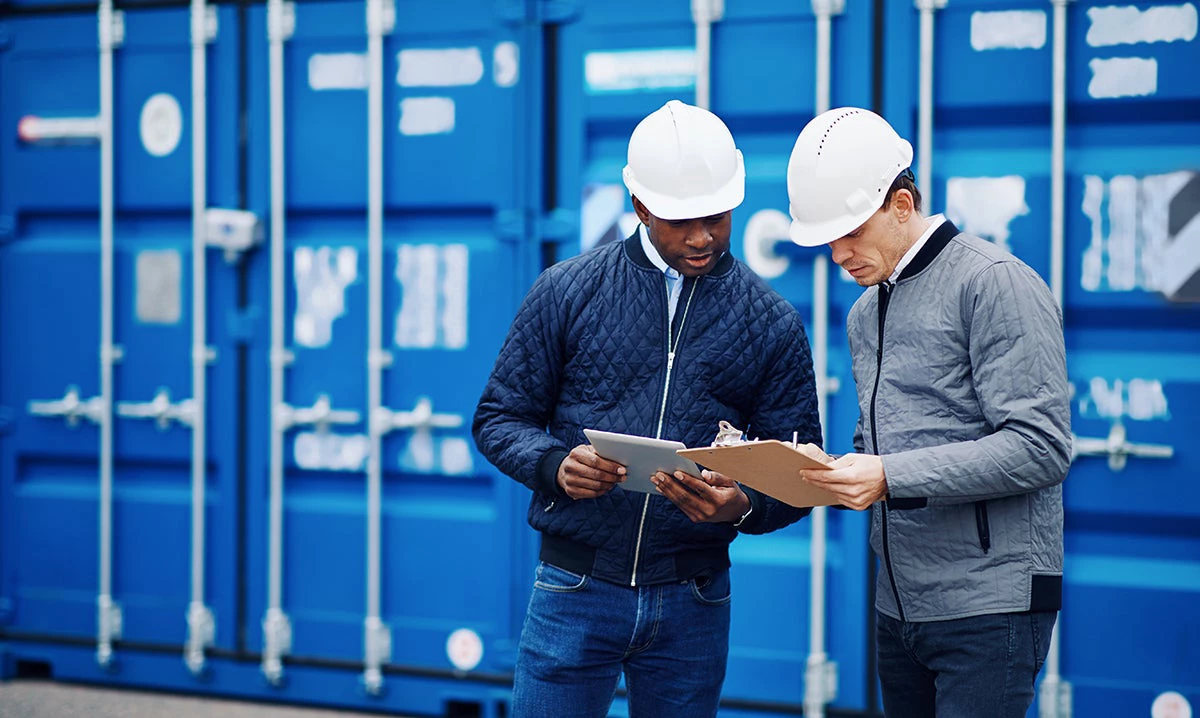 Flamingo/Shutterstock
Flamingo/Shutterstock
Blockchain technology is quickly transforming the way we store and manage data. Instead of a centralized database, blockchain relies on a network of data blocks that are protected and linked together using cryptography. The rise of blockchain promises to revolutionize many sectors, including cross-border trade logistics and global supply chains: blockchain can help track international shipments more effectively, reduce administrative tasks by automating the documentation process, and protect transactions across the entire logistics chain.
Recently, the World Bank Hub for Infrastructure and Urban Development in Singapore hosted an event dedicated specifically to the practical applications of blockchain for trade and logistics. There are three important lessons we took away from this discussion:
1. Blockchain has the potential to make trade and logistics more efficient by increasing transparency and security.
- Currently, shipping goods from a manufacturer to a consumer involves many different stakeholders: exporters, terminal operators, port authorities, freight forwarders, customs, etc. Most of the paperwork involved still needs to be handed down from one party to the next in person. This results in situations where goods may have arrived at the port, but the relevant paper trail has not caught up. End users often have no clear visibility as to where their goods are and when they will arrive. This inefficiency generates extra costs. Blockchain can alleviate these concerns by:
- Minimizing or eliminating the need to repeat similar information across multiple documents;
- Recording the digital signature of each party to increase security;
- Tracing and correcting errors at each stage of the process
- Allowing all parties in the supply chain to access information on one common platform
- Blockchain reduces the monopoly enjoyed by certain intermediaries over critical information. Any one party in the global supply chain can access real-time information on where a consignment is, trace possible mistakes made in documentation, or establish the identity of his/her partners. This could go a long way in unlocking opportunities for small and medium enterprises in the supply chain.
- In a blockchain formation, no individual can change the algorithm that is built into the system without the prior approval of others. This increases confidence in the system and ensures a level playing field for even the smallest players.
2. Examples of blockchain applications in the supply chain sector include:
- Food security: blockchain will greatly improve the traceability of food products along the entire production and logistics chain, allowing authorities to react much more quickly and efficiently in cases of large-scale food contamination. That is the idea behind the Blockchain Food Safety Alliance launched by Walmart and IBM in 2017.
- Cross-border payments: blockchain makes it easier to transfer money across borders and between institutions while reducing middle-men costs, especially when it comes to compliance inquiries. The Interbank Information Network (IIN), for instance, is a distributed ledger led by JP Morgan that enables banks to quickly resolve issues such as compliance checks, faulty addresses, or missing data, and facilitates secure peer-to-peer messaging.
- Cross-border finance: blockchain will allow countries’ financial authorities to transfer digital documents and data seamlessly across borders. This kind of cooperation is already a reality in Singapore and Hong Kong, whose respective monetary authorities are using a common blockchain system to share information, with the objective of boosting trade and trade finance activities between the two countries.
3. Blockchain will only gain traction in the global trade and logistics sector if a critical mass of stakeholders embrace this technology.
- To ensure widespread adoption, it is necessary to educate both small and large industry players about the benefits and relatively low uptake cost of blockchain as there are pay-as-you-use services.
- Governments can lead by example. In that spirit, Dubai has mandated that all government agencies use blockchain technology for visa applications, bill payments, and license renewals, which will eliminate more than 1 billion paper documents used for government transactions annually.
- Likewise, it is the responsibility of governments to update legislation and regulations in order to help guarantee the security of blockchain and build trust in the system. To that end, the Singapore Government has already started reviewing its Electronic Transactions Act (ETA) to facilitate the processing of logistics-related documents using blockchain.
While there is huge potential for the use of blockchain in the trade and logistics sector, its mass adoption is not guaranteed. Improving cyber security, allowing the requisite privacy and increasing interoperability of systems for scalability, will allow more of its potential to be harnessed!
This discussion on the practical applications of blockchain for trade and logistics was hosted by the World Bank Hub for Infrastructure and Urban Development in Singapore. It was moderated by Almud Weitz (Practice Manager, South East Asia and the Pacific, World Bank Transport Global Practice), with Serene Ho (Director, Networked Trade Platform Office, Singapore Customs) and Vishal Batra (Blockchain Solutions Architect, IBM Research Lab, Singapore) sharing perspectives from the public and private sectors respectively. Yin Yin Lam (Senior Transport Specialist, World Bank Transport Global Practice) and Marcus Bartley (Senior Private Sector Specialist, World Bank Macroeconomics, Trade and Investment Global Practice) served as the discussants. Participants tuned in from various locations across Asia to engage in the conversation.




Join the Conversation